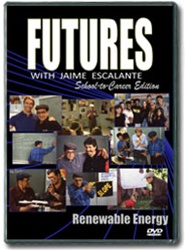
Renewable Energy – Energy can come from windmills spinning in the desert wind, changes in ocean temperature, steam generated deep in the molten core of the earth, or even from burning vegetation. Locations include California’s Mojave desert, where solar engineers explain how giant mirrors capture the sun’s energy, and Hawaii, where scientists experiment with tidal energy. Classroom guest: Ed Begley, Jr
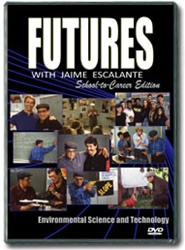
Environmental Science and Technology – Some of the most promising careers of the future will solve the pollution problem. Locations include New York City’s 2,400 acre Freshkills Landfill and the renowned recycling program in the City of Seattle. Also featured: Amazon rain forest specialists, a “garbage anthropologist,” and the unique work of musicologist Bernie Krause, who records and catalogs the sounds of nature. Classroom guest: Olivia Newton John.
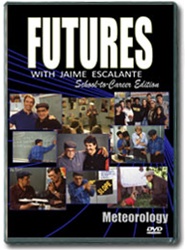
Meteorology – How hard will the winds blow? Where will the lightning strike? Predicting the weather is the science of meteorology. In this episode, meet hurricane specialists, tornado trackers and other people who collect data on weather systems. Not all storms take place on Earth, as space weather scientists explain when they discuss the need to predict huge solar flares. Classroom guest: TV weatherman Spencer Christian.
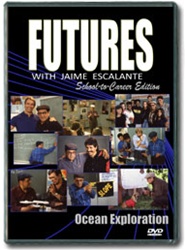
Ocean Exploration – Oceans cover 70 percent of the Earth’s surface-yet only a tiny fraction of the ocean has been explored or studied. Dive with oceanographers at Monterey Bay; see geologists examine rock samples from the ocean bottom; watch a remotely-operated vehicle collect delicate marine samples. Join the crew of the Columbus Discovery ship as they sight a ship that sank in the 1800’s. Classroom guest: Eugenie Clark, “The Shark Lady.”
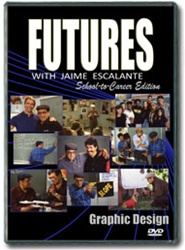
Graphic Design – Graphic design is a language that crosses all barriers. Professionals include people who create posters for movies, and paintbox computer graphics artists at MTV. Locations include the graphics department at USA Today, where illustrations are created by hand and by computer, from sketch to the finished page. Classroom guest: designer Roland Young.
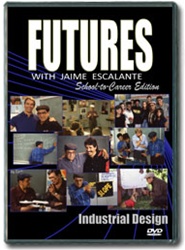
Industrial Design – Telephones, refrigerators, watches, chairs-almost everything we use every day was conceived by industrial designers. At Eastman Kodak Company and JBL/Harman Speaker Manufacturing, designers show viewers what goes into coming up with a good prototype. Ralf Hotchkis’ wheelchair designs have set a new world standard. And in scenes from the movie, “Blade Runner,” we see the futuristic products conceived by Mr. Escalante’s classroom guest, Syd Mead.
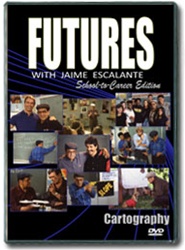
Cartography – From a remote peak where the US Geological Survey measures the angles and distances of distant ranges, to the powerful computers at the Environmental Systems Research Institute, cartographers collect and collate data about our environment, and find creative ways to present their data in two-dimensional and three-dimensional images. Other locations include the Jet Propulsion Laboratory in Pasadena, California, Thomas Brothers Maps, and the Planetary Sciences Department at the University of Arizona. Classroom guest: Edward James Olmos.
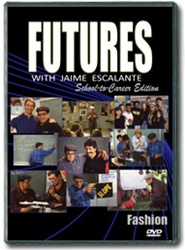
Fashion – Art meets business in this fascinating look at the world of fashion, where viewers will meet some of the industry’s hottest designers, retailers and buyers. Macy’s buyer Anita Jenkins, famed designers Holly Sharp and Jimmy Z. Ganzer, founder of Jimmy’Z Sportwear, explain just how much know-how it takes to run a successful company in an environment of constant change. Also featured are professionals at Bongo, and the Fashion Institute of Design and Merchandising. Classroom guests: Cindy Crawford, Kadeem Hardison.
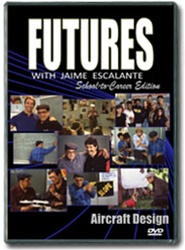
Aircraft Design – There’s no question about it: human beings love to fly! And that urge has created thousands of career fields. From Paul MacCready’s pedal-powered ultralight, the Gossamer Condor, to AeroVironment’s re-creation of an ancient pterodactyl soaring above the Southern California desert, viewers learn that it takes math, science and technology to put man in flight. Also featured are aeronautics professionals at the California Institute of Technology. Classroom guest: Blue Angel Lt. Commander Donnie Cochran.
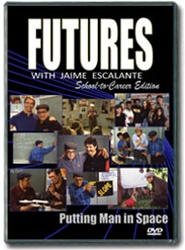
Putting Man in Space – In this award-winning program on space exploration, intertwined with dramatic scenes of astronauts weightless inside the Shuttle, “spacewalking”, and magnificent spacescapes, are interviews with professionals such as Jerry Borer, who monitors the Shuttle’s propulsion systems; Michael See, who supervisors the ship’s landing phase; flight controller Gloria Araiza, and robotics engineers Larry Li and Anne Murray. Classroom guest: Astronaut Bonnie Dunbar.
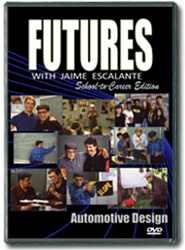
Automotive Design – Viewers learn that the Penske Racing Team includes 105 people, and a range of careers that few people know about. In rare footage from the General Motors Advanced Concepts Center, viewers watch a concept car taking form, from sketch to finished model. Designers agree that if you love cars, are willing to work hard, and like art and engineering, automotive design could be the field for you. Classroom guest: Indy 500 champion Danny Sullivan.
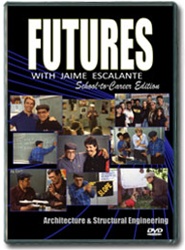
Architecture & Structural Engineering – Shapes. Once you start looking for them, they’re everywhere. It is the structural engineers, like those at the Cantor/Seinuk Group, who make an architect’s design come to life-and perhaps make it earthquake-proof as well, which is the challenge faced by students at Cooper Union School of Architecture. Dizzying visuals take viewers on a high-speed roller coaster ride at Six Flags, where they also meet the designers and engineers who plan and build these amazing structures. Classroom guest: Architect Frank Gehry.
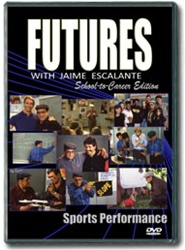
Sports Performance – Whether it’s football, basketball, hockey, skiing, baseball, gymnastics or snowboarding, amateur and professional athletes depend on a host of behind-the-scenes professionals. On-the-job interviews include product developer Tim Piumarta at Santa Cruz Skateboards, a helmet designer at Giro Sports Designs, and a senior designer at Nike sports performance products. Classroom guests: Kareem Abdul-Jabbar, Jackie Joyner-Kersee, Bob Kersee.
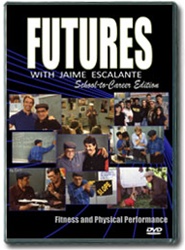
Fitness and Physical Performance – For every world-class athlete or dancer, there is a team of doctors, trainers, physical therapists and nutritionists who make sure he or she is in top shape. Go behind the scenes at the L.A. Lakers, where Gary Vitti, Lakers’ trainer, and the staff of technicians, nutritionists and physical therapists discuss their work. Viewers also meet dietitian Evelyn Tribole, who works with actors at Columbia Pictures, and physical therapists at the Alvin Ailey Dance Theatre. Also featured are prostheticians who describe how artificial limbs allow amputees to play baseball, climb mountains, swim, and even run marathons. Classroom guest: basketball player Michael Cooper.
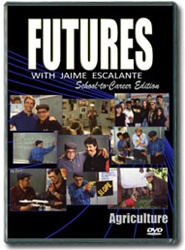
Agriculture – How do you feed the world with more and more people and less and less farmland? Experts in aquaculture, aeroponics, hydroponics and other exciting agricultural developments take viewers inside their experimental fields and greenhouses. If Arthur Galston of Yale University has his way, crops will be growing on Mars, helping create an atmosphere that could support human life. Locations include Tejon Farms, NASA/Ames Research and the Bodega Marine Laboratory. Classroom guest: Jimmy Smits.
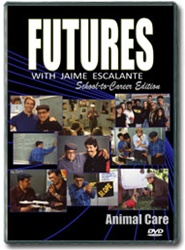
Animal Care – Cheetahs slink around a field biologist as she makes entries about their behavior on her laptop computer. A technician feeds a “milkshake” made of herring fillets and cream to a baby penguin. A wildlife biologist releases a giant condor from a mountaintop. A veterinarian clips an elephant’s toenails. An equine technician hooks up sensors to a racehorse to monitor its heartbeat as it runs on a treadmill. From zoos and wildlife rehabilitation centers to horse farms, and veterinary hospitals, viewers get an inside look into the careers of animal care. Classroom guest: Muttley the dog.
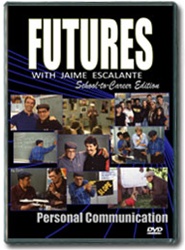
Personal Communication – Fiber optics, digital transmission, two-way video conferencing, wireless communication via satellite-much of the technology developed for the space program is being used on Earth. At Motorola, engineers describe the Iridium communication satellites. At Berkeley Systems, Inc., Marc Sutton develops a talking computer program for the sight-impaired. Also featured: physicist Kent Cullers at NASA/Ames Research Center; spacecraft engineer Bridget Macika of Hughes Aircraft Company; and more. Classroom guest: Astronaut Ellen Ochoa.
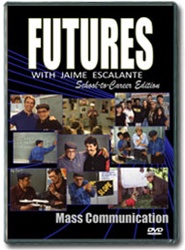
Mass Communication – Taking an idea, packaging it with sound and pictures and then transmitting it to millions of people at a time-that’s mass communication. Meet broadcast engineers Kelly Williams of the National Association of Broadcasters, Howard Miller of PBS, radio producer Peggy Berryhill, disc jockey Dave Montoya, radio production engineer Anthony Sanchez, broadcast technician Tammi Martin, and sports producer/director Susan Stratton. Classroom guest: Ted Koppel.
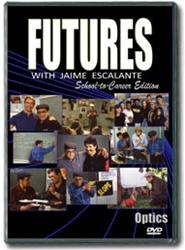
Optics – Scanning the night sky for new constellations or capturing a moment of life in a photograph, mankind seeks to expand its vision through the use of lenses and light. Viewers get a look at careers at places like AT&T Bell Labs, where fiber optic cables are used for high-speed communication, and Pacific Bell, where technicians demonstrate a two-way video conference call. Also featured are astronomers at the Multiple Mirror Telescope in Arizona; developers of advanced film concepts at Eastman Kodak Company; commercial photographer J.P. Morgan; and artists at Lasermedia. Classroom guest: photographer Mary Ellen Mark.
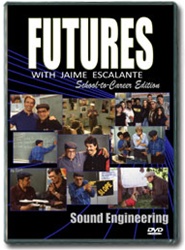
Sound Engineering – At a rock concert, Billy Joel is at the piano, but what comes out of the speakers is controlled by sound engineer Brian Ruggles. Saxophonist Clarence Clemons plays at the Hollywood Bowl, as acoustical engineer Elizabeth Cohen demonstrates equipment to test the sound quality. The sound adventure also includes Dr. Amar Bose’s explanation of the inner workings of his amazing Acoustic Wave music system, and a behind-the-scenes demonstration of sound effects created by sound editor Steve Flick. Classroom guest: Academy Award-winning composer Hans Zimmer.
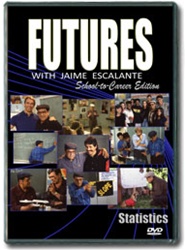
Statistics – Statisticians work in some of the most exciting careers there are. A specialist with the US Bureau of the Census talks about the daunting task of counting 250 million people in 160 million households. Political scientist Chris Arterton explains the role of statistics in politics. From statistician Dave Tuttle of the L.A. Dodgers and Billboard Magazine chart manager Terri Rossi, the message comes home that a solid understanding of statistics is the best way to succeed in business. Classroom guest: Arnold Schwarzenneger.
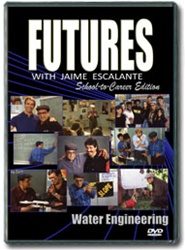
Water Engineering – Cities and farms need millions of gallons a day. How do you contain it? Move it? Filter it? Conserve it? Civil engineer Bernard Daly takes viewers through the huge underground valve chamber that regulates the flow of water into New York City. Civil engineering assistant Michael Deas and associate Suzanne Rowghani explain the workings of the massive California Aqueduct. Director James Cameron (Titanic) relates how he stored, heated and moved 7.5 million gallons of water for the movie The Abyss. Also featured are irrigation specialist Margarita Engle and CA Chief of Urban Water Conservation Keith Watkins. Classroom guest: James Cameron.
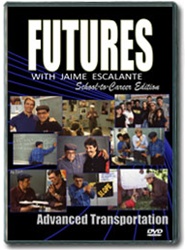
Advanced Transportation – A look at some of the best and the worst transportation systems in the US, focusing on the people who work to create innovative transportation solutions. Examples are James Powell and Gordon Danby, designers of a Mag-Lev train that travels noiselessly at 300 miles an hour on a cushion of air; and mechanical engineers Derek Hamilton and Kitty Rodden, working on a car that travels at 65 miles an hour on less power than it takes to run a hair dryer. Classroom guest: astronaut Guy Bluford.
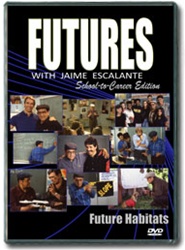
Future Habitats – A fascinating introduction to the planetary scientists, architects, aerospace engineers, doctors and even artists who are working out ways to make life possible-and pleasant-on other planets, asteroids and the moon. Featured locations include the Space Studies Institute at Princeton, the Sasakawa International Center for Space Architecture, Rockwell International Space Systems Division, and the NASA-Ames Research Center. Classroom guest: Star Trek’s Leondard Nimoy.
